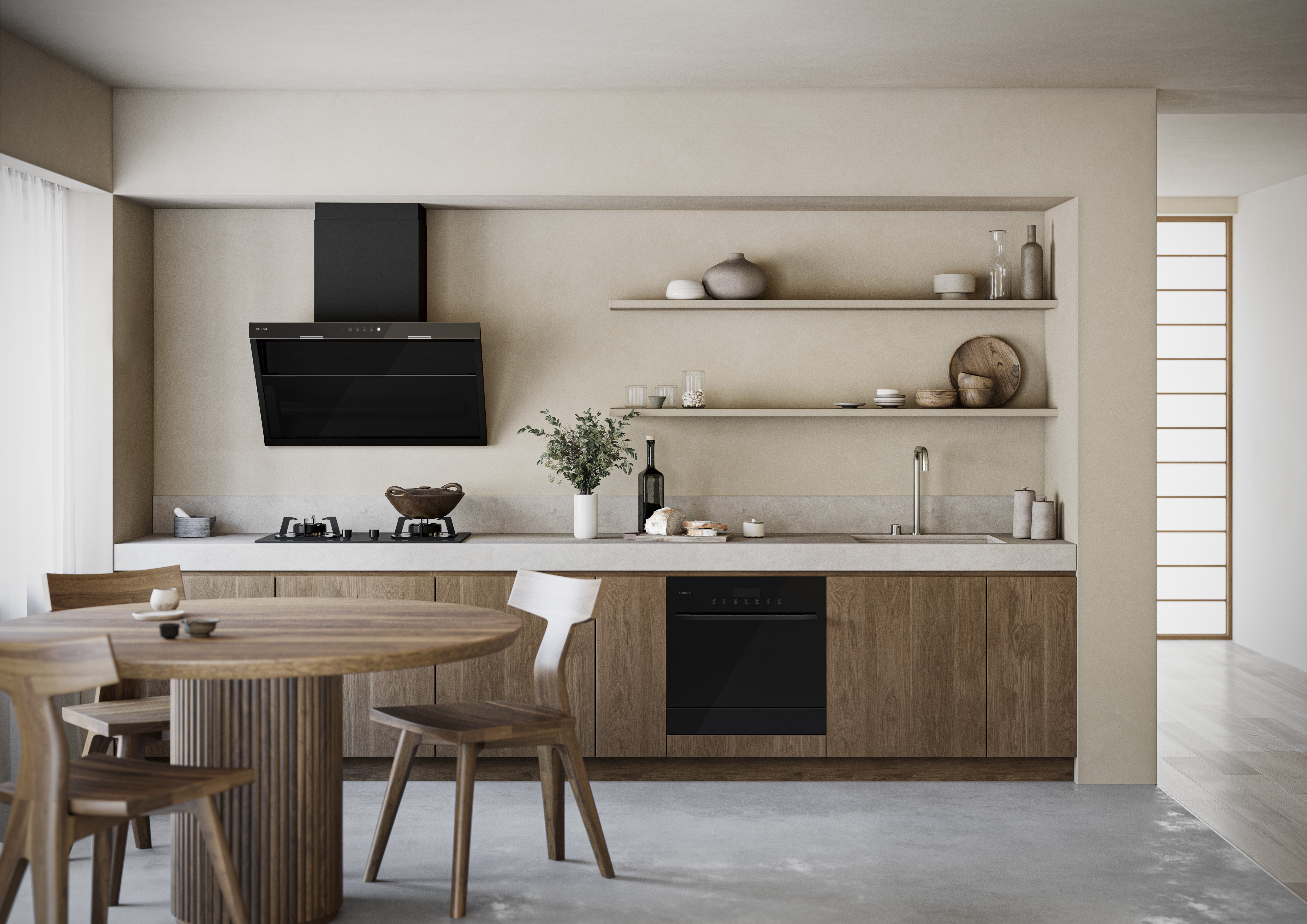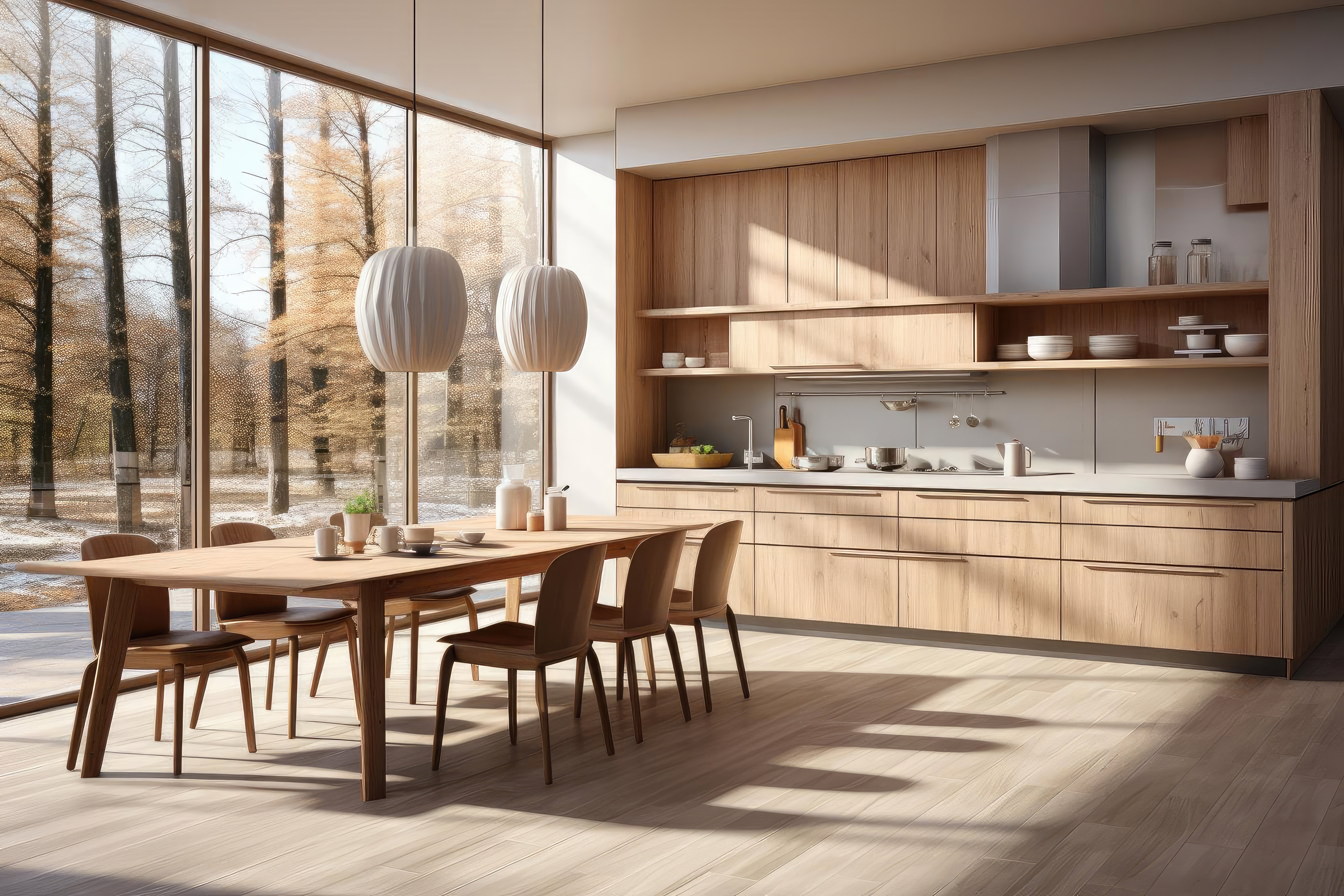Exploring the Eco-Friendly Japandi Kitchen: Embracing Sustainability and Serenity
In these times when environmental consciousness is becoming important, kitchen design is also being transformed. Manufacturers are putting more effort into promoting sustainable materials and eco-friendly appliances in order to reduce the harmful impact on the planet. This movement towards sustainability matches well with Japandi design efforts to emphasize nature, simplicity, and functionality.
In this article, we'll explore the world of eco-friendly Japandi kitchens.
What is a Sustainable Kitchen?

A sustainable kitchen means minimizing the environmental impact on the planet while enhancing our well-being. We can create a sustainable kitchen by being mindful in many ways, from eco-friendly appliances to water conservation measures and non-toxic finishes. Including these environmentally conscious decisions into our kitchen design, we can create spaces that not only benefit the environment but also enhance living comfort.
Is Japandi Style Sustainable?
With its emphasis on clean lines, natural materials, and a "less is more" approach, Japandi style certainly promotes sustainable living. By incorporating natural materials, choosing long-lasting quality, and caring functionality, Japandi kitchens can greatly contribute to green life without compromising on style or comfort.
Let's look at some elements and examples of how to create an eco-friendly kitchen as well as keeping to a Japandi style.
Exploring Sustainable Elements within the Japandi Kitchen
1. Cabinet with eco-friendly, natural materials

Sustainable kitchens prioritize the use of natural materials such as wood, stone, and granite. The Japandi style respects nature and urges inclusion of these materials to promote harmony with the environment. The material for cabinets is an essential part of the kitchen and can make a significant impact upon its environment and sense of aesthetics.
Furthermore, when you are choosing wood cabinets, you can check the labels for FSC/PEFC certification. These are aimed at promoting responsible forest management and helping consumers make environmentally conscious choices when purchasing wood products.
Another environmental consideration is choosing materials that are easy to recycle.
2. Minimalist style kitchen only with essential items

Sustainable kitchens are all about cutting waste, even down to the tools and gadgets we use. Japandi kitchens feature uncluttered spaces and focus on functionality. Minimizing the kitchen with the "less is more" Japandi’ philosophy, only necessary items remain in the kitchen, resulting in waste reduction.
3. Energy-efficient appliances


Sustainable kitchens integrate energy-efficient appliances. Dishwashers equipped with water-saving features minimize water usage. Innovative cooker hoods are designed to resist staining, making them easy to wipe clean with just a wet cloth, consequently reducing the amount of water and soap for cleaning.
Some also incorporate reusable filters rather than disposable ones. An energy-efficient refrigerator is also welcomed but choosing the right size is important. Consider your family's needs and leave some space around the unit for adequate airflow. Also, be aware and turn off the power of the appliances when not in use. This helps avoid wasteful energy consumption during cooking. Timer functions may also be a useful tool to conserve energy. Remember that proper maintenance practice will ensure high performance and extend the lifespan of the equipment. All these are possible to achieve while pursuing the Japandi design style.
4. Energy efficient lightings

Japandi kitchens prioritize natural light from windows to illuminating the space. Maximizing natural light reduces reliance on artificial lighting, thereby reducing energy consumption and creating a tranquil atmosphere at the same time. In the evening, Japandi kitchens require soft lighting for ambiance, which also conserves energy. In particular, LED lighting is energy efficient, has a longer lifespan, and emits less heat.
5. Eco-friendly kitchen products

To further minimize environmental impact, Japandi kitchens often replace single-use plastics in favor of reusable containers and utensils made from sustainable materials like bamboo, glass or stainless steel. These items are also a good interior design choice and provide warmth in the house. Using environmentally friendly cleaning products reduces exposure to harmful chemicals and minimizes pollution. Japandi also celebrates craftmanship. Good quality kitchen items will last for years and reduce waste.
Conclusion
Crafting an eco-friendly Japandi Kitchen is not only a solid design choice, but a conscious commitment to sustainable living. Japandi style can promote a mindful way of living that is harmonious with nature and shows respect for our precious planet. By choosing a design style for its aesthetic comfort and sustainability, we are helping shape a better world.

